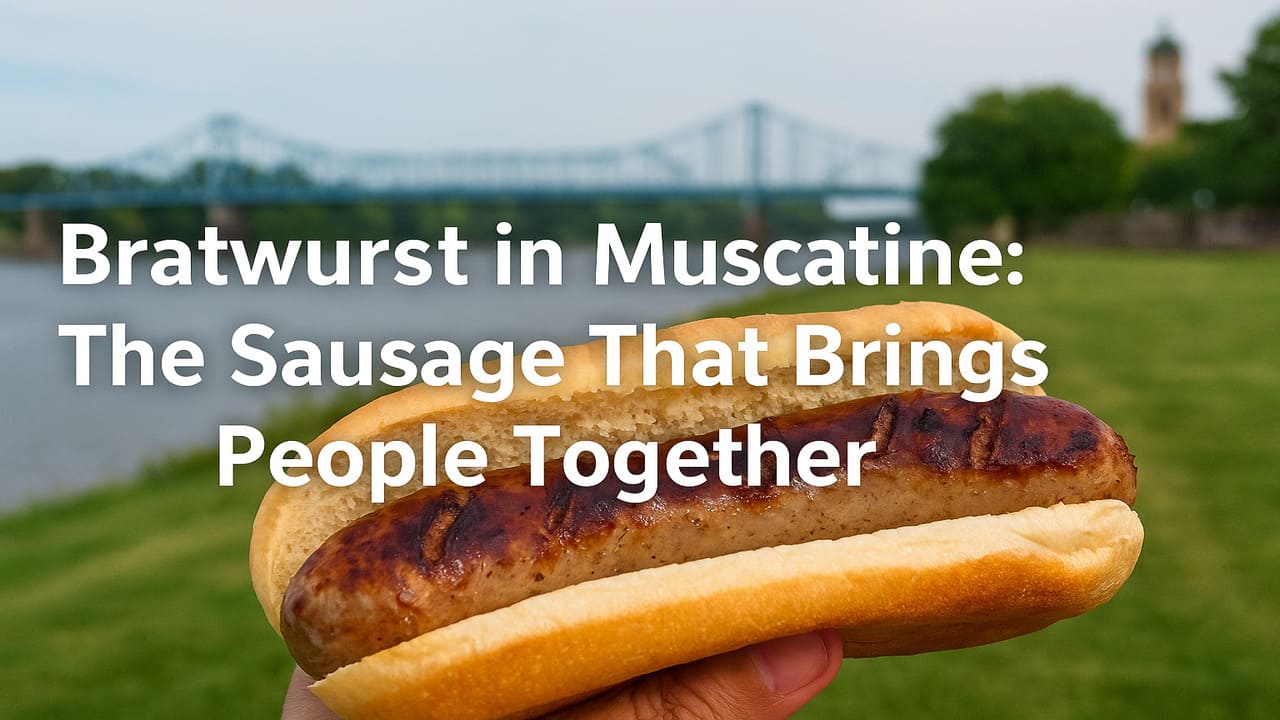
Meet Muscatine – Among the many flavorful offerings enjoyed by locals and visitors alike, one dish stands out for its smoky aroma, robust flavor, and cultural charm bratwurst sausage. While bratwurst traces its roots back to Germany, the sausage has found a special home in Muscatine. Whether it’s grilled during summer festivals, sold fresh at local butchers, or served in diners and backyard gatherings, bratwurst has grown beyond being just another meal it’s a communal experience, deeply tied to the city’s rhythms and identity.
Bratwurst is a type of German sausage made primarily from pork, sometimes with beef or veal, and seasoned with spices like nutmeg, ginger, caraway, and garlic. The name comes from the Old High German words “brät” (finely chopped meat) and “wurst” (sausage). Traditionally grilled or pan-fried, it’s often enjoyed with mustard, sauerkraut, or nestled into a crusty bun.
In Muscatine, however, bratwurst is more than an imported recipe. Local butchers have developed their own spin on it some infusing it with hickory smoke, others blending in jalapeños, cheddar, or beer from nearby breweries. This regional adaptation gives Muscatine bratwurst its own culinary identity while honoring the German-American heritage that’s part of Iowa’s cultural fabric.
Read More : You’ll Never Believe What’s in KFC’s Legendary Spice Mix!
One cannot speak about bratwurst in Muscatine without acknowledging its strong presence during community events. During the Muscatine County Fair, Riverfront festivals, and Fourth of July picnics, the aroma of bratwurst sizzling on open grills wafts through the air, drawing people together in lines and conversations.
Many local churches and civic groups host sausages cookouts as part of their fundraising efforts, while high school booster clubs often grill them during sports events. It’s not unusual to find bratwurst served alongside sweet corn, baked beans, and lemonade during a summer potluck, reinforcing its role as a comfort food that connects generations.
At the Muscatine Farmers Market, local meat vendors frequently offer handmade bratwursts with a variety of flavor profiles from traditional mild to spicy cheddar-filled links. These artisanal sausages reflect the city’s ongoing support for local food producers and a broader interest in farm-to-table dining.
Restaurants and diners in downtown Muscatine, such as locally-owned pubs and taverns, also feature bratwurst on their menus. Served on pretzel buns, accompanied by house-made mustard or apple slaw, bratwurst sausage has proven to be a flexible star on both casual and gourmet plates. At Oktoberfest-inspired events, you might even catch a bratwurst-eating contest or a beer pairing session hosted by local craft brewers.
Also Read : You’ll Never Believe What’s in KFC’s Legendary Spice Mix!
The popularity of this sausage in Muscatine is not merely culinary it’s emotional. Families have made grilling bratwurst a weekend tradition, while older generations recall their parents hand-turning sausages over charcoal pits in city parks. There’s a nostalgic value in the simplicity of it all: bread, sausage, and stories passed around picnic tables.
For newcomers, bratwurst often becomes their first “taste” of Muscatine’s culture. It’s a food that breaks the ice, sparks small talk, and brings people to the same table whether at a neighborhood block party or a tailgate at Muscatine High.
As culinary trends come and go, one thing seems certain bratwurst will remain a beloved staple in Muscatine’s food landscape. With a new generation of chefs and food lovers experimenting with bold flavors, fusion ideas, and sustainable sourcing, bratwurst’s future may look different but it won’t lose its roots.
Food trucks may pair it with kimchi or aioli. Home cooks might turn to air-frying or smoking methods. Yet, at its core, bratwurst in Muscatine will always represent something deeper than just good food it stands for tradition, togetherness, and the joy of sharing a meal that has stood the test of time.